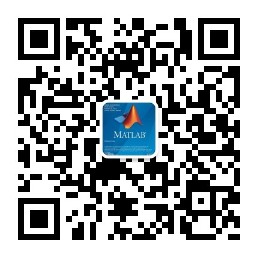博文
[转载]【信息技术】【2010.06】城市交通场景的车辆分类
|||
本文为英国金斯顿大学(作者:Norbert Erich Buch)的博士论文,共248页。
对城市交通场景视频中车辆和行人的检测和分类进行了研究。最终的目标是设计自动化系统来指导监控人员,减少在城市交通监控中观察数百个摄像头的人力资源。摄像头是交通管理部门监控交通状况和改善旅程体验的一种行之有效的手段。
首先,利用标定摄像头上的三维模型对每帧车辆进行检测和分类。从背景估计中提取运动轮廓,并将其与投影模型的轮廓进行比较,以确定车辆和行人的地平面位置和类别。该系统已经用英国内政部的参考i-LIDS数据集进行了评估。比较了不同类别数、三种不同天气条件和不同视频输入滤波器的性能。包括检测和分类在内的整个系统的查全率(recall)达到87%,查准率为85.5%,优于文献中的同类系统。
为了提高鲁棒性,研究了在监视应用中使用局部图像块合并目标外观的方法。作为一个例子,提出了一种新的纹理显著性分类器,通过识别显著的纹理区域来检测视频帧中的人。实时地将图像分为前景和背景。分类过程中不使用时间图像信息。该系统用于检测进入无菌区的人员,这是视觉监视的常见场景。已对英国内政部的i-LIDS无菌区基准数据集进行了测试。通过将基本检测器的输出与简单的运动信息融合,扩展了基本检测器,其性能明显优于标准运动跟踪算法。将纹理分类与卡尔曼滤波相结合,可以降低检测时间。对于24小时测试数据集,每秒运行10帧的融合方法的最好结果为F1=0.92。
基于对局部特征的良好识别效果,提出了一种新的分类器,该分类器将三维模型的概念与局部特征相结合,克服了传统基于轮廓的方法和二维局部特征的局限性,车辆的外观随视角变化很大,局部特征往往会被遮挡。本文采用全三维模型对目标类别进行检测,并在此基础上定义特征块标定后的摄像头允许将观测值仿射变换为标准化表示,并由此定义3DHOG特征(定向梯度的3D扩展直方图)。在检测和分类过程中使用一组可变的兴趣点,这取决于三维模型中的哪些点是可见的。将3DHOG特征与基于FFT和简单直方图的特征进行比较,并与相同数据下的运动轮廓基线进行比较。结果表明,该方法达到了可比拟的性能。特别是,该方法的一个优点是,它对由可变光照、相机质量和来自其他对象的遮挡引起的运动轮廓的错误形状具有鲁棒性。在不同分辨率摄像头的新数据集上对算法进行了进一步的评估,证明了训练数据对新摄像头视图的可移植性。采用卡尔曼滤波跟踪方法获取跟踪轨迹信息,用于目标行为分析。在相同条件下,正确检测到的轨迹比基线运动跟踪器(OpenCV)的性能好94%。介绍了一种基于检测分类系统输出的公交专用道监控演示系统。论文最后对工作进行了批判性分析,并对未来的研究机会进行了讨论。
An investigation into detection andclassification of vehicles and pedestrians from video in urban traffic scenesis presented. The final aim is to produce systems to guide surveillanceoperators and reduce human resources for observing hundreds of cameras in urbantraffic surveillance. Cameras are a well established means for traffic managersto observe traffic states and improve journey experiences. Firstly, per framevehicle detection and classification is performed using 3D models on calibratedcameras. Motion silhouettes (from background estimation) are extracted andcompared to a projected model silhouette to identify the ground plane positionand class of vehicles and pedestrians. The system has been evaluated with thereference i-LIDS data sets from the UK Home Office. Performance has beencompared for varying numbers of classes, for three different weather conditionsand for different video input filters. The full system including detection andclassification achieves a recall of 87% at a precision of 85.5% outperformingsimilar systems in the literature. To improve robustness, the use of localimage patches to incorporate object appearance is investigated for surveillanceapplications. As an example, a novel texture saliency classifier has beenproposed to detect people in a video frame by identifying salient textureregions. The image is classified into foreground and background in real- time.No temporal image information is used during the classification. The system isused for the task of detecting people entering a sterile zone, a commonscenario for visual surveillance. Testing has been performed on the i-LIDSsterile zone benchmark data set of the UK Home Office. The basic detector isextended by fusing its output with simple motion information, whichsignificantly outperforms standard motion tracking. Lower detection time can beachieved by combining texture classification with Kalman filtering. The fusionapproach running on 10 frames per second gives the highest result of F1=0.92for the 24 hour test data set. Based on the good results for local features, anovel classifier has been introduced by combining the concept of 3D models withlocal features to overcome limitations of conventional silhouette-based methodsand local features in 2D. The appearance of vehicles varies substantially withthe viewing angle and local features may often be occluded. In this thesis,full 3D models are used for the object categories to be detected and thefeature patches are defined over these models. A calibrated camera allows anaffine transformation of the observation into a normalised representation fromwhich ‗3DHOG‘ features (3D extended histogram of oriented gradients) aredefined. A variable set of interest points is used in the detection andclassification processes, depending on which points in the 3D model arevisible. The 3DHOG feature is compared with features based on FFT and simplehistograms and also to the motion silhouette baseline on the same data. Theresults demonstrate that the proposed method achieves comparable performance.In particular, an advantage of the proposed method is that it is robust againstmissshaped motion silhouettes which can be caused by variable lighting, cameraquality and occlusions from other objects. The proposed algorithms areevaluated further on a new data set from a different camera with higher resolution,which demonstrates the portability of the training data to novel camera views.Kalman filter tracking is introduced to gain trajectory information, which isused for behaviour analysis. Correctly detected tracks of 94% outperform abaseline motion tracker (OpenCV) tested under the same conditions. Ademonstrator for bus lane monitoring is introduced using the output of thedetection and classification system. The thesis concludes with a criticalanalysis of the work and the outlook for future research opportunities.
1 引言
2 文献回顾
3 运动轮廓分类器
4 用于人类检测的局部特征
5 3DHOG分类器
6 实际应用
7 结论
附录A 数学证明
附录B 插件层次结构和参数
附录C 其它性能表格
更多精彩文章请关注公众号:
https://m.sciencenet.cn/blog-69686-1216617.html
上一篇:[转载]【计算机科学】【2018.06】深度学习在食品目标识别中的应用
下一篇:[转载]【计算机科学】【2017.08】快速卷积神经网络